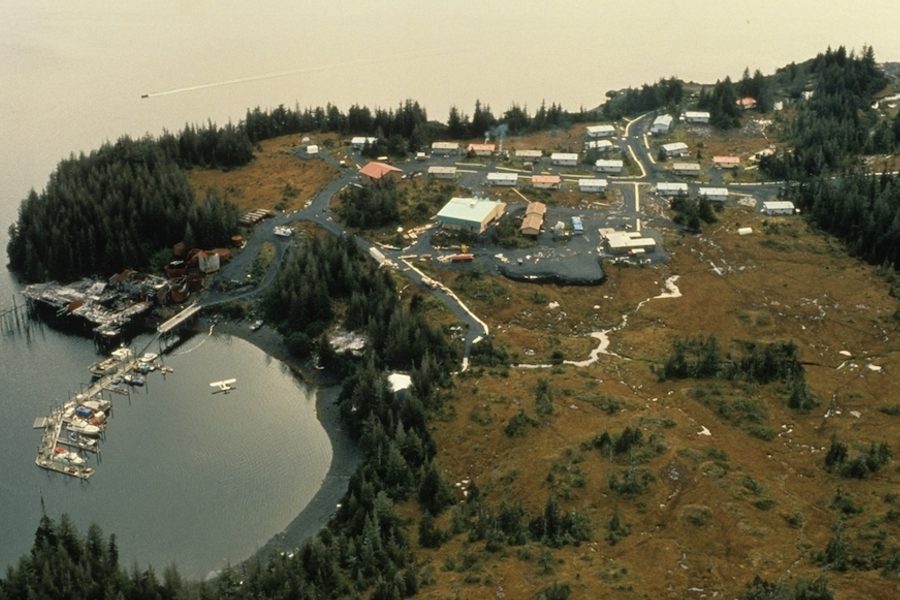Alaska’s Uneven Rural Law Enforcement System Often Leaves Remote Villages With No Cops
Kyle Hopkins

Editor’s Note: This story was originally published by ProPublica, which produced it in partnership with the Anchorage Daily News.
In his first seven months as a village public safety officer (VPSO) in the remote Alaska village of Chenega, Andrew Jonda has enjoyed world-class fishing and gorgeous ocean views.
What he hasn’t done is make a single arrest.
That’s because the community Jonda has been hired with public money to protect is home to only 40 to 60 people. “The crime rate is much lower than other places around the rest of Alaska and the U.S.,” he said.
Which raises a question: When villages 10 times as large go without law enforcement of any kind, why is Chenega one of the last Alaska communities served by a VPSO?
An analysis by the Anchorage Daily News and ProPublica has found that as the number of Alaska VPSOs sharply declined in recent years, the scant remaining officers are increasingly likely to work in communities with fewer than 100 residents. The towns and villages served by VPSOs today have fewer Alaska Natives residents, higher per capita income levels and are more likely to be on the road system than in 2005, our review found.
The trend, driven by poor recruitment and a lack of infrastructure in the most vulnerable communities, leaves some of the most remote and largest villages unprotected.
Most rural Alaska villages can only be reached by plane, boat or snowmobile, and a local first responder can make the difference between life and death in an emergency. In 2005, Department of Public Safety records showed only one VPSO worked in a village on the road system. Today, one in six work in highway communities.
VPSOs are not selected and deployed by the state but instead are hired by nine nonprofit tribal consortiums, which provide health services in their regions, as well as one borough government. So even if the need is greater in one location, if the area’s nonprofit cannot fill an opening, it won’t have a VPSO. The officers’ salaries are funded by the state, which also adopts policies that govern what they can and can’t do.
Some VPSOs say these policy decisions, such as restricting VPSOs from traveling between villages and forbidding them from working on felony investigations without oversight, has made the job less desirable and less effective. As the regional nonprofits struggled to fill officer vacancies this year, the Department of Public Safety denied 72% of their requests for recruitment spending.
“I don’t think the program is broken. I think the state is breaking it,” said Chris Hatch, former VPSO coordinator for the Northwest Arctic Borough who emphasized he was sharing his personal opinion and not speaking for any institution.
Hatch now works for a nonprofit that employs VPSOs in communities along the Glenn and Richardson highways, east of Anchorage, Alaska’s largest city.
“It’s easier to get recruits because you are on the road system,” Hatch said. “You can drive to Anchorage in four hours.”
Under state regulations, local village governments are expected to provide housing and utilities for some police officers. But housing shortages are common in villages, and in 31 Alaska villages a majority of homes have no running water or sewer service.
Leonard Wallner, a former trooper and head of the VPSO program for several coastal communities in south-central Alaska, said he placed a VPSO in the tiny community of Chenega because tribal leaders there “bent over backward” to obtain an officer.
“You’re looking at the infrastructure. What’s available, where the person’s going to live?” Wallner said.
Wallner said Chenega provided Jonda a home. That’s one reason the nonprofit placed him in the community even though there are larger villages in the region with no police.
“It’s much easier to recruit to some place where the infrastructure is in place,” Wallner said.
Current and former VPSOs said working solo in larger villages can overwhelm a single officer, leading to burnout. Longtime White Mountain VPSO Dan Harrelson said he does fine covering the community of 200 people, but villages of 600 or 700 people stretch a lone officer too thin.
In other villages, VPSOs have little recourse if local leaders want them gone; some are pressured to leave if they arrest a politically connected resident.
This year, the administration of Gov. Mike Dunleavy, a Republican, has used job vacancies as justification to deny certain requests for VPSO funding and to cut the allotment in the state budget. Dunleavy and his public safety commissioner, Amanda Price, said that the money wasn’t going to be spent anyway and that the cuts caused no harm to the dwindling VPSO force.
But the state also denied requests to pay for VPSO recruitment advertising and for equipment such as fingerprint scanners, evidence lockers and anti-suicide blankets designed so they cannot be rolled into a noose, according to a Daily News and ProPublica review of state Department of Public Safety contracts.
Of the $55,775 that VPSO employers requested for recruitment and advertising to attract new candidates, the Department of Public Safety denied all but $15,775. The Northwest Arctic Borough, which serves 10 Inupiaq villages, has no VPSOs and asked for $1,000 in monthly recruitment funding. The state OK’d $200.
Dunleavy told delegates at the Alaska Federation of Natives convention this month in Fairbanks that the state would fund any VPSO positions for which there are viable candidates. Asked moments later why the state denied a majority of requests for recruitment funding, he did not directly answer.
“All I can answer is what we’ll be doing forward,” he said. “We’re going to be funding all the positions and the recruits that the nonprofits are able to find.”
Department of Public Safety spokeswoman Megan Peters said some equipment funding and recruitment spending was denied because of the small number of remaining officers. Last year, $4.1 million that the department gave to the VPSO program was returned to state coffers because of job vacancies, Peters wrote in a response to questions.
“Grantees asked for [a higher] amount despite the fact that many of them are not able to spend the money they were previously appropriated because they are not filling their vacant positions and are not able to retain some VPSOs,” she wrote.
A review of VPSO grants shows regional nonprofits spend as much as 35% of their awards on overhead or “indirect costs.” A former public safety commissioner, Bill Tandeske, said that figure should be no higher than 15%.
Price said the state made several changes to the funding agreements VPSO employers signed in July, in hopes of attracting more applicants and speeding the hiring process. Most significantly, the length of VPSO training was shortened from 16 weeks to eight weeks in order to allow village candidates to return home for hunting and fishing seasons.
The state Legislature has created a task force to recommend additional fixes for the program. Rep. Chuck Kopp, R-Anchorage, said new proposals should be ready by January.
Jonda, the former Eagle Scout working in tiny Chenega, said he moved to the Prince William Sound island from Tucson, Arizona. He dreamed of living in Alaska and the job, starting at $26.79 an hour, could help pay down student debt.
Jonda said he’s quickly finding his place in the village. He’s invited to bonfires and fishing trips. “There’s so few people, so everybody sticks together,” he said.
Even the smallest communities aren’t always as quiet as they seem.
Just two years ago, before the arrival of the new VPSO, Chenega residents found a man dead in his home. Around the same time, a local 20-year-old man wrote a strange post on Facebook, saying he had to teach someone who attacked him “a lesson.”
The village went on lockdown, Wallner said.
“The community was making calls: ‘Help, we’ve got this guy wandering the village,’” he said. “Everybody’s locking their doors because they don’t know what the hell is going to happen next.”
Investigators eventually determined two men had been playing video games and drinking vodka together when they began to fight. One beat the other to death with his fists and wooden rail from a broken chair. (The defendant pleaded guilty to manslaughter in 2018.)
Seven hours passed as the suspect wandered the village, before the first trooper arrived. Had a VPSO been on the job at the time, it would have taken minutes to respond, Wallner said.




